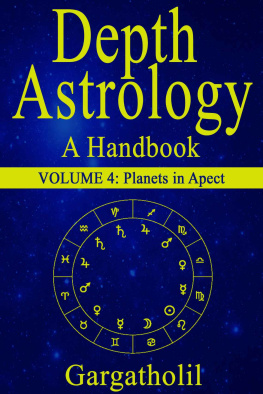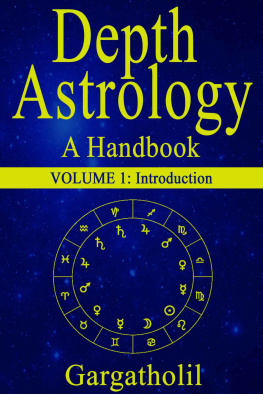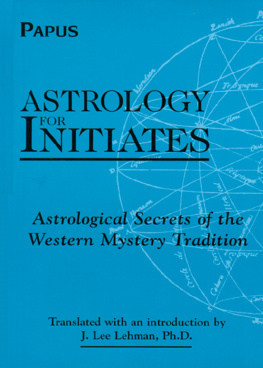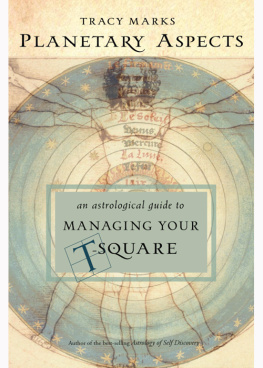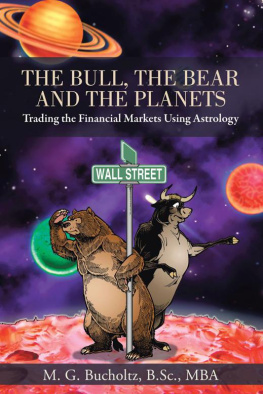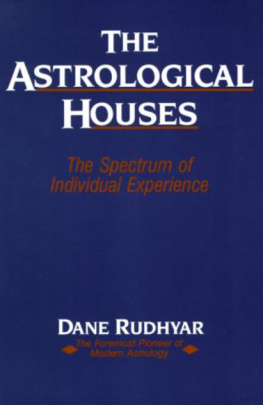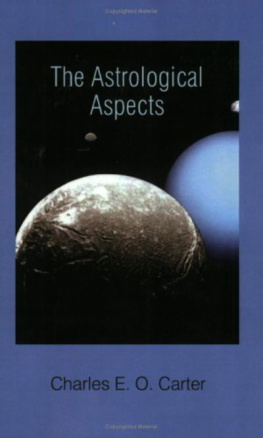DEPTH ASTROLOGY
An Astrological Handbook
Volume 4
Planets in Aspect
By
Gargatholil
Smashwords Edition, License Notes
This ebook is licensed for your personal enjoyment only. This ebook may not be re-sold or given away to other people. If you would like to share this book with another person, please purchase an additional copy for each recipient. If youre reading this book and did not purchase it, or it was not purchased for your use only, then please return to Smashwords.com and purchase your own copy. Thank you for respecting the hard work of this author.
Table of Contents
Aspects of the Sun
Aspects of the Moon
Aspects of Mercury
Aspects of Venus
Aspects of Mars
Aspects of Jupiter
Aspects of Saturn
Aspects of Uranus
Aspects of Neptune
Aspects of Pluto
Aspects of the Moons Nodes
Aspects of Part of Fortune
Note
Aspects are permutated. For aspects of one planet to prior planets, see that aspect under the prior planet. For aspects of the Ascendant or Midheaven, see under the relevant planet. This method avoids duplication of aspect descriptions.
Aspects of the Sun
Sun and Moon Contacts
The Sun aspecting Moon brings the self-identity function (symbolized by the Sun) in contact with the emotional/subconscious function (symbolized by the Moon). The Sun and the Moon are the two luminaries in the astrological chart. They represent the two most important and dominant functions of the psychefunctions that are opposed in many ways. In fact, the Sun and Moon symbolize the inherent duality of the psyche and the cosmos, in many ways similar to the symbol of the Tao (Yin-Yang). Like the Moon, the Tao itself is dualhaving a light side and a dark side. The Sun is all brightness and unity. But, this unity is contained within the duality, as well as encompassing the duality. Thus, consciousness of self and identity, symbolized by the Sun, both is juxtaposed against and is contained within the subconscious world, symbolized by the Moon. Therefore, any Sun-Moon contact represents, at some level, the mediation between consciousness and the unconscious.
This mediation between consciousness and the subconscious plays out in the relationship between the self and all of the impinging and conditioning influences received from its environment (the unconscious other), as well as from its personal subconscious. A subset of this is the affect of the emotional and the irrational on the conscious and rational self-identity. Another subset is comprised of the conditioned habits and behaviors that define the selfs identity.
The Sun symbolizes an inherent need to define and validate self-identity. A Sun-Moon contact suggests the importance of the emotional base, subconscious conditioning and those other functions and qualities that are symbolized by the Moon in defining the selfs identity. The aspect existing between the Sun and the Moon suggests the ease or difficulty with which the Lunar functions and qualities affect the self and define its identity. It also suggests the ease or difficulty with which the conscious self establishes its relationship with the unconscious, the emotional and the irrational.
The Sun is associated with the Sky-Father archetype (to be distinguished from the Old Man/Father archetype symbolized by Saturn). This archetype conveys creativity, vigor and lordship. The Moon is associated with the archetype of the Cosmic Mother, from whom all things are born and out of whom all Becoming takes place. From this archetype springs the Moons association with mothering, family, security, rootedness and the past. Thus, a Sun-Moon contact suggests some relationship between the polarized cosmic masculine and cosmic feminine energies of the universe. Another side of this polarization is that between Being (the Sun) and Becoming (the Moon).
As in any oppositional relationship, positive potential exists for the Sun and Moon functions and qualities to complement and balance each other. A positive Sun-Moon contact (or a difficult one that has been worked through) can suggest a well-rounded individual who has brought their conscious/rational and subconscious/emotional sides into balance. A positive contact can also indicate the potential to exercise your sense of self to control your habits and behavior.
If a difficult aspect is present, or if your psyche is operating at a lower, ego-bound level of consciousness, dysfunctionality between the conscious and subconscious states of mind is likely to occur. This often involves conflict or confusion involving self-identity and your emotions. Other manifestations of the Moonparticularly subconscious conditioning and the influence of your mother and familyalso may play into the dysfunctional dynamic.
The transcendent potential of the Sun-Moon contact occurs involves the positive actualization of the polarity between the states of Being and Becoming, and the archetypal masculine and feminine. In order to accomplish this, the subconscious must be entered consciously and transformed into super-consciousness. Personal self-identity must be abandoned and you must realize the mystery of the essential unity that overcomes duality, while circumscribing and preserving duality.
Sun conjunct Moon
Sense of Self Strongly Identified with the Emotional/Subconscious Function
This aspect is associated with the new Moon and, in its most extreme, with the eclipse of the Sun. In many respects, your identity may be said to be weak. You tend to be captive to unconscious forces--your emotions, your background, your subconscious motivations. Another dimension of this weakness is the disappearance of the self through merging your personal consciousness into the sea of the Divine Unconscious. Both states are symbolized by the Suns eclipse.
To a certain extent, a distinction may be made between the waning and the waxing new Moon as signifying the end of an old cycle or the beginning of a new cycle. For a waning phase conjunction, it may be that your identity is burdened down by a load of heritage and conditioning. For a waxing phase conjunction, it may be that your identity is so fragilely established that, like a new vessel, you take your color from sources other than yourself. At the new Moon, also, most of the Moon is hidden or only dimly visible. Thus, your emotions and other conditioning influences may remain hidden, though deeply affecting your personality.
An alternative manifestation of this conjunction is that the primal masculine and feminine energies within the psyche are merged and united so that each absorbs the strengths of the other, producing a powerful and whole personality. As likely as not, in order to achieve this stage, you have had to work through an earlier stage of being dominated by unconscious forces. The waning stage challenge would involve throwing off the bonds of tradition, emotional conditioning, family influence or parental dominance. The waxing stage challenge would involve the discovery that there is a self, independent of your conditioning influences, and the nurturing and development of that nascent self into a mature being.
It is likely also that you will have to transcend cultural sex-role stereotypes if the feminine and masculine energies within your psyche are to be fully integrated. If you fail to overcome these stereotypes, then the likely result will be, if you are a woman, a personality with low self-esteem and a weak identity. If you are male, the result of persisting in the culturally defined role is likely to be a personality that is out of touch with your feminine side. You are conditioned to play a dominant role, but you have little depth of self behind the conditioned persona. If you integrate the feminine and masculine energies, you are likely to become strong, not only in your will but also in your intuition. You will be independent of spirit, sensitive, nurturing, balanced and whole.

